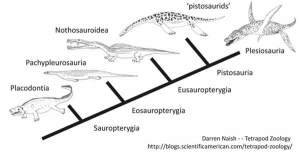If you read my previous post you will know that I recently went to an Archaeological conference in Riyadh. Despite the difficulties in arriving at the meeting, it was an eye opening event, with a wealth of information about the Archaeological and Palaeo-Archaeological past of the Arabian Peninsula. This area, for Archaeologists, is metaphorically a gold mine of undiscovered information.
For those of you who grew up with Rider Haggard’s “King Solomon’s Mines”, you will not be surprised that Arabia has a wealth of vast ruined cites, dating back before the Romans, with sophisticated infrastructure indicating people who were well travelled and well educated, connecting Arabia to Egypt and beyond. Arabia seems to have been a trunk road between Africa and Asia. We are talking about around 3,000BC. Quarayyah, a vast site 90kms NW of Tabuk, potentially the ancient capital of the Midian Kingdom and Taymar, ancient, fabled city, once home to Babylonean Kings. These are just two of those being excavated.
Saudis, have not traditionally been very interested in the distant past, and so many of these sites have gone un-recorded for thousands of years. Archaeological departments in Saudi universities are not big, and it is impossible for a woman to take Archaeology as an Undergraduate here. The very few Saudi Arabian women archaeologists here have trained abroad and are not allowed on Saudi field expeditions, but have to rely on joining foreign university digs. I would like to think that some of the women’s universities will take up the challenge and open their own Archaeology departments.
But perhaps some of the most exciting work, is coming from a time before written history. Professor Michael Petraglia, Oxford professor of Human Evolution and Prehistory, is studying the links between ancient movements of Hominids out of Africa and through Arabia to Eurasia.
Do you remember Lucy, the earliest Hominid skeleton to be found by Richard Leakey in 1974? (3.2 millions old) She was discovered in Ethiopia, and her skeleton is oldest known on the evolutionary trail of us, Homo Sapiens. Prof. Petraglia is trying to track the movement of her descendants out of Africa through Arabia to Asia.
The Arabian peninsula has not always been a desert, the climate has waxed and waned through lush green forest, open savannah and the extreme desert you see today. Human, and indeed Hominid populations grew, moved and contracted during that time too. Professor Petraglia is looking at what happened to those people as the climate changed, did they migrate? did they die out? or did they scatter and become the ancestors of todays nomadic population?
His excavations today, along a system of ancient lake beds, could have a widespread implication on future climate change in Arabia and elsewhere in the world. Professor Petraglia is hoping that his research will be used to help create more accurate models for climate change. Even a small temperature increase in Arabia is likely to produce a wetter climate. Arabia could be going green yet again.
There were many other talks during the conference that were equally interesting, and I was intrigued that the Kingdom could be the next big location for Dinosaurs, although it has always be considered a desert for Palaeontologists. (Is that a horrible joke?) It mostly has to do with the fact that no one has really looked here before. Dr Ben Kear from Uppsala University, is looking for huge marine vertebrates, so far he has found partial fossils of Sauropterygians, a vast bottom feeder and Nothsaurs, an aquatic ancient croc and various types of giant fish. In the Jurrasic deposits there is evidence for some huge dinosaurs including Titanosaurs, about 20m long and a big aquatic predator called Pregnathdon. However compared to other regions they have only scratched the surface in terms of excavations.
With out being too negative, It is important to say that this Archaeological conference is a big step forward for the Kingdom, however it is not all sweetness and light. Human Evolution, and indeed any evolution based topic is really a tricky subject in Saudi Arabia. Muslim teaching is widely varied, but many Sunni Muslims believe in creationism. Darwinism is still a dirty word. This means it is tricky for outside universities to get permission to research and excavate here. There is more interest for projects that focus on periods after the birth of the Prophet Muhammad. This means that, in Archaeological terms, The Arabian Peninsula is still an undiscovered kingdom.
It is hoped that this will become an Annual event. The fact that it took place, that women were allowed to attend and contribute, along side Saudis ( a shout out for a great lecture on the Farasan islands by French Archaeologist Solene Marion de Proce), is a tangible step in the right direction.
There were many fantastic talks, and information that cannot be easily found anywhere else was abundant. From me a big thank you to everyone who managed to organize this event. I am already looking forward to next year.



